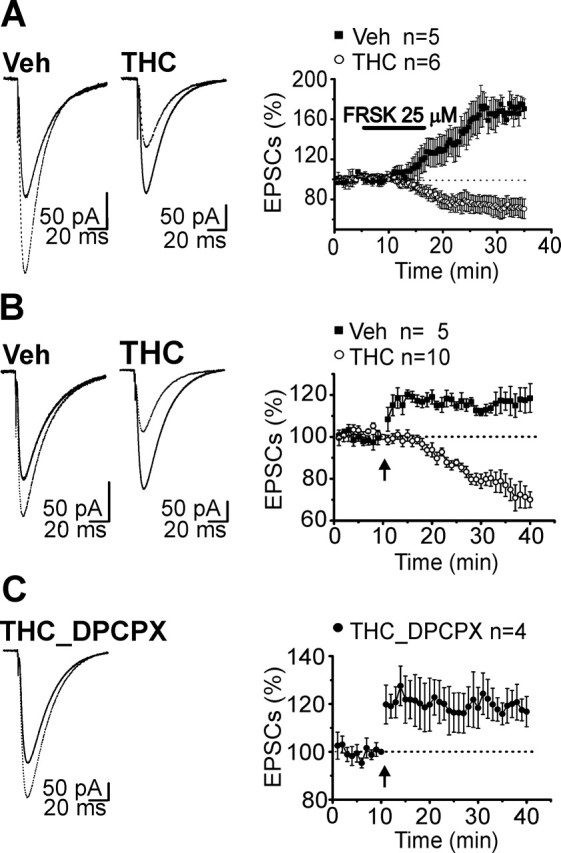Figure 6.

In THC tolerant mice, presynaptic PF-PC LTP was blocked by adenosine receptor activation. A, Activation of the cAMP/PKA pathway by forskolin application induced an enhancement of EPSCs in vehicle-injected mice. However, after chronic THC exposure, forskolin caused a depression of PF-PC synaptic transmission. B, Brief tetanic stimulation (8 Hz, 15 s) caused a long-lasting increase of the PF responses in slices from vehicle (Veh)-treated mice, whereas it triggered a clear EPSC depression in THC tolerant mice. C, Inhibition of A1R by application of DPCPX (500 nm) prevented the tetanus-induced depression and fully rescued PF-PC in THC-tolerant slices. DPCPX application started 30 min before stimulation and continued until the end of the experiment. A–C, Left, Superimposed averaged records (5 traces) of PF response from a PC before (solid line) and 30 min after forskolin (A) or tetanus application (B, C) (dotted line) in cerebellar slices from vehicle- and THC-treated mice. A–C, Right, Averaged time course (mean ± SEM) of forskolin- (A) or tetanus-induced (B, C) changes in normalized PF EPSC amplitudes. A, Traces were acquired every 0.033 Hz. B, C, Traces were acquired every 0.033 Hz and averaged every 10 s. Tetanus was given at t = 10 min (indicated by the arrow).
